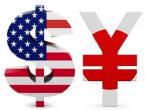Spot gold goes down, FED "takes the lesser of two evils", unshakable confidence in the withdrawal
On Monday (October 11), spot gold fell as the U.S. dollar index remained above the 94 mark. Although the US non-agricultural employment data was weak, it hardly changed the market's expectation that the Fed would announce the start of reducing bond purchases next month.
At 19:42 GMT+8, spot gold fell 0.14% to US$1754.71 per ounce; the main COMEX gold contract fell 0.14% to US$1754.9 per ounce; the US dollar index rose 0.07% to 94.170.
Even if the data show that the US employment growth rate in September was the smallest in nine months, and non-agricultural jobs increased by 194,000, far below the 500,000 predicted by analysts, the August data was revised upwards and the unemployment rate dropped. To an 18-month low.
This shows that concerns about labor shortages are still reasonable, inflation concerns are lingering, and gives the Fed reason to curtail its emergency stimulus measures that it started last year. The U.S. 10-year Treasury bond yield hit a four-month high of 1.615% last Friday.
Shinichiro Kadota, senior foreign exchange strategist at Barclays Bank, said: "Although the overall non-agricultural employment data is weak, when you study the details, you will find that the outlook is still solid. Nothing can stop the Fed from reducing its debt purchases next month."
The U.S. economy still has a comparative advantage
Recent data has made people worry that the US economy will take longer than expected to recover the remaining 5 million jobs lost due to the new crown epidemic, and factors such as high inflation and the continued existence of the new crown epidemic will weaken growth. But San Francisco Fed President Daley said on Sunday (October 10) that she did not believe that the epidemic would cause an economic recession, and that it was too early to say that the economy "stalled".
Daly said that I have always believed that Delta will cause losses, and that it has already caused losses, but it has not derailed us and will not plunge us into another economic recession. With the development of the new crown epidemic, the economy is also developing. "
When asked about inflation, Daly said that the price pressure faced by American consumers is "painful", but it is directly related to the new crown epidemic and is not expected to continue. This echoes her previous assessment and that of many other Fed officials that the current round of high inflation is "temporary," even if it is longer than most policymakers initially expected.
Daly said: "Everyone is feeling the rise in the prices of energy, food, and basic services. This is painful because we are not used to seeing this. In some categories, it is jaw-dropping. Some eagerly want to go out and spend money. Consumers of money have encountered supply constraints, and of course prices will rise, but I don’t think this is a long-term phenomenon."
European Central Bank President Lagarde told the German media recently that the European Central Bank is paying close attention to wage dynamics and ensuring that inflation expectations are anchored at 2%. “We should not overreact now. Tightening monetary policy too early at this time may hurt Economic recovery and employment in the Eurozone."
Compared with the Federal Reserve, the European Central Bank’s demand for inflation has changed from “fear” to “unwanted”. Lagarde also emphasized that “should not overreact” at this time, indicating that it is more focused on achieving the 2% target in the medium term and facing supply. The impact will also be more calm. Therefore, even if inflation is high, the European Central Bank will tolerate inflation higher than 2% for a longer period of time than the Federal Reserve.
The Fed appears to be preparing to scale back its stimulus measures. The US inflation-adjusted "real" rate of return is negative, but still better than Europe. Given that the European Central Bank is not in a hurry to tighten policy, this gap may widen. Therefore, the relative economic advantage supports the US dollar.
U.S. corporate profit growth in the third quarter is expected to be significantly smaller than the previous value
As U.S. companies begin to announce third-quarter financial reports in the coming week, investors are ready for another strong increase in U.S. corporate profits. Thanks to cutting costs and passing high prices on to customers, US corporate profit margins have remained at a record level so far this year. Some investors are eager to know how long this situation can last.
Terry Sandven, chief equity strategist at US Bank Wealth Management, said: "The growth rate is slowing, but the level is still not low. Due to product and labor shortages and inflationary pressures, we will focus on the level of demand and its impact on consumption during important holidays."
However, as companies continue to emerge from the new crown epidemic, new problems such as supply chain constraints and inflationary pressures are also emerging. Compared with the blowout growth in the second quarter, the market expects the profit growth in the third quarter to be much smaller. After the recent surge in oil and gas prices, investors are weighing the impact of sharp increases in energy costs on businesses and consumers.
Bank of America strategist Savita Subramanian said in a report last week: "The supply chain problems caused by the epidemic have spread beyond consumer products. And the global stumbling seems to continue."
Energy prices are rising, and shortages of natural gas, coal, electricity, and oil are global phenomena. The rebound in commodity prices priced in dollars is another incentive to buy dollars. Unsurprisingly, the premium for buying U.S. dollars is rising.
Goldman Sachs cuts U.S. economic growth
Goldman Sachs lowered the US economic growth forecast for 2021 and 2022 by 0.1 percentage point to 5.6% and 0.4 percentage point to 4%, respectively, on the grounds that financial support is expected to decrease by the end of next year, and the recovery of consumer spending is better than previously expected Even more sluggish.
If calculated on a quarterly basis, Goldman Sachs will reduce its GDP growth forecast for the fourth quarter of 2021 and the first quarter of 2022 from 5% to 4.5%, lower its forecast for the second quarter of 2022 from 4.5% to 4%, and reduce the third The forecast for the quarter fell from 3.5% to 3%.
The difficulty in recruiting in the US job market is indeed worrying. The labor force participation rate has not improved. Although the government’s additional unemployment benefits ended in September, many people still have concerns about the risk of infection and will not be far back to work. Some simply choose to retire early. Various reasons have caused labor shortages and wages have continued to rise, planting a time bomb for future economic stagnation.
As economic growth slows, it has promoted the demand for safe-haven assets, including the U.S. dollar. In addition, December 3 is the postponed debt ceiling deadline. Although it is unlikely, if there is a default, it will undoubtedly be disastrous for the economic outlook. At that time, the US dollar is expected to gain new favor and gold will usher in a new round. Downtrend.
Look at $1738 in spot gold
On the daily chart, the price of gold has started a three-wave downward trend from US$1,781, and the support below looks to the 38.2% target of US$1738. Wave 3 is a sub-wave of the downward (3) wave that started at $1834. (3) Lang's 61.8% target is at $1688. (3) Wave is a sub-wave of the downward ((Y)) wave that started from 1917 USD. The ((Y)) wave belongs to the adjusted IV wave that started at $2,075.











